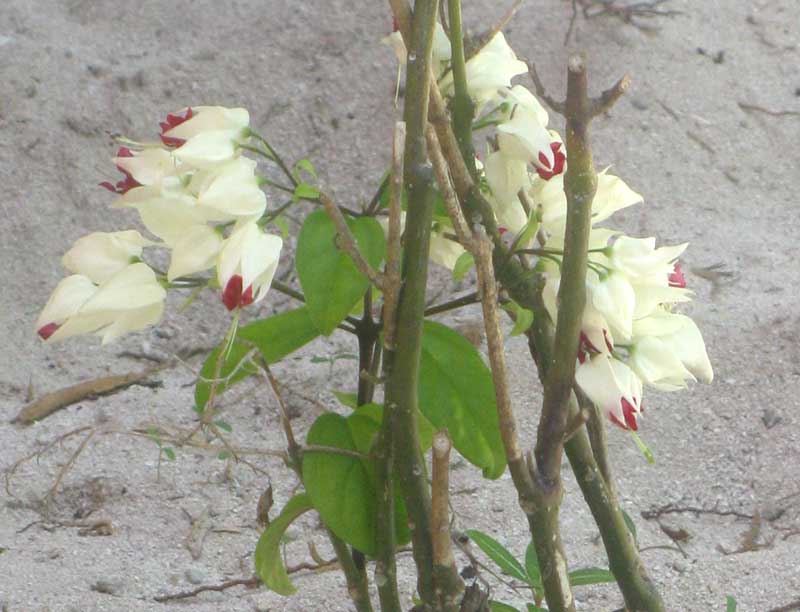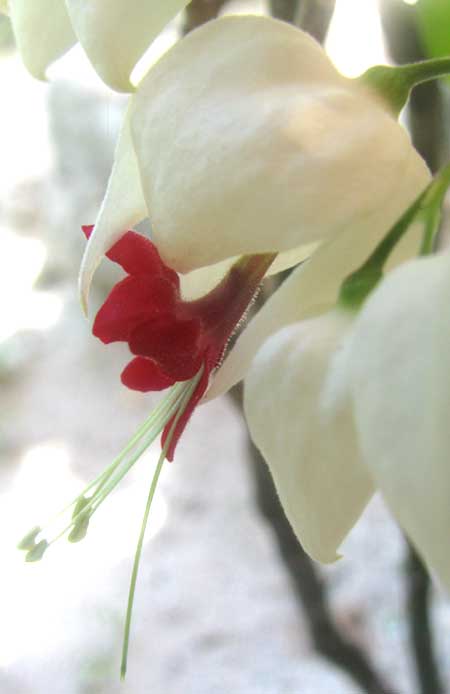Excerpts from Jim Conrad's
Naturalist Newsletter

from the August 7, 2011 Newsletter issued from Mayan Beach Garden Inn 20 kms north of Mahahual; Caribbean coastal beach and mangroves, ~N18.89°, ~W87.64°, Quintana Roo state, MÉXICO
BLEEDING GLORY-BOWER
At the base of my stairs Marcia has planted a twining evergreen shrub with very unusual flowers, as seen above. The prettily white and red, inch-long (2.5cm) blosom is shown below:

Our gardeners thought it was a kind of bougainvillea, but it's completely unrelated. It's CLERODENDRUM THOMSONIAE, a member of the Verbena Family, the Verbenaceae, originally from tropical western Africa, from Cameroon west to Senegal. Among its English names are Bleeding Glory-Bower, Bleeding Heart Vine, and Bagflower.
The blossom's peculiarity is that its calyx, which in most flower kinds is small, green, and inconspicuously subtending a colored corolla, here is expanded into a white, bladder-like thing almost swallowing up the dark red corolla. From the crimson corolla in a fairly normal way emerge four stiff, long stamens, and a similarly stiff, long style, which bends downward, away from the anthers, the better to avoid self- pollination.
Despite its gorgeousness, Bleeding Glory-Bower isn't one of those recently developed cultivars with over- manipulated genes. In fact, the shrub was most popular during the 1800s, when it was mainly known in the English speaking world as Beauty Bush. The question is, then, why this spectacular species has lost favor among gardeners.
The answer is simple. Nowadays most gardeners don't pay much attention to their plants' individual needs, and this bush has some special needs. Its roots must be partially submerged in water most of the time, and the plant needs full sunlight.
I don't have much hope for Marcia's little plant stuck in dry sand in perpetual shade at the bottom of my stairs.